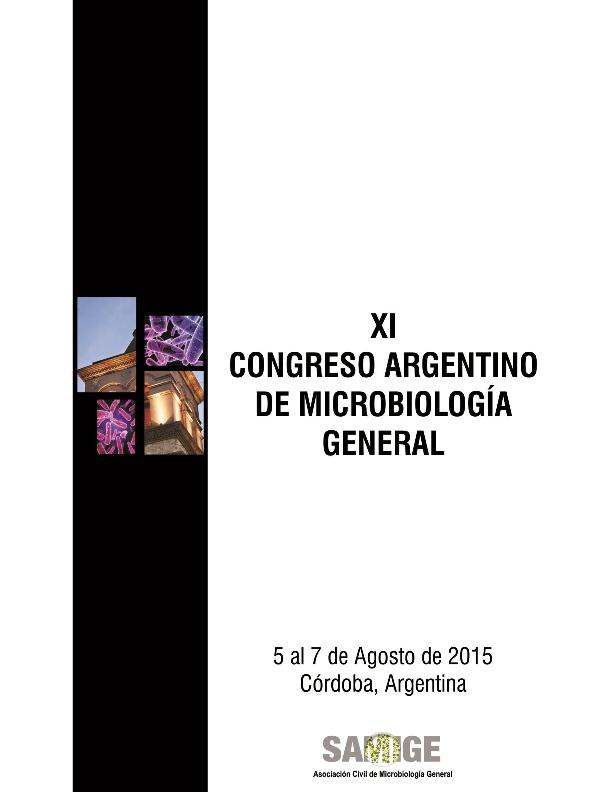Evento
Prokaryotic diversity in ecosystems associated to minerals from the hypersaline lake Tebenquiche in the Atacama desert
Fernandez, Ana Beatriz; Rasuk, Maria Cecilia ; Contreras, Manuel; Novoa, Fernando; Poire, Daniel Gustavo
; Contreras, Manuel; Novoa, Fernando; Poire, Daniel Gustavo ; Visscher, Pieter T.; Ventosa, Antonio; Farias, Maria Eugenia
; Visscher, Pieter T.; Ventosa, Antonio; Farias, Maria Eugenia
 ; Contreras, Manuel; Novoa, Fernando; Poire, Daniel Gustavo
; Contreras, Manuel; Novoa, Fernando; Poire, Daniel Gustavo ; Visscher, Pieter T.; Ventosa, Antonio; Farias, Maria Eugenia
; Visscher, Pieter T.; Ventosa, Antonio; Farias, Maria Eugenia
Tipo del evento:
Congreso
Nombre del evento:
XI Congreso Argentino de Microbiologia General
Fecha del evento:
05/08/2015
Institución Organizadora:
Sociedad Argentina de Microbiología General;
Título del Libro:
Libro de resúmenes del XI Congreso Argentino de Microbiologia General
Editorial:
Sociedad Argentina de Microbiología General
Idioma:
Inglés
Clasificación temática:
Resumen
The Salar de Atacama is located in the Chilean central Andes and it is a huge evaporitic system with a large number of saline water bodies in its interior. Lake Tebenquiche is one of the largest and prokaryotic microorganisms inhabiting this lake are subjected to severe conditions as high solar radiation due to a lower barometric pressure at high altitude, extreme daily temperature fluctuations, intense changes in salinity caused by net evaporation and high arsenic concentrations in the water due to volcanic events. Therefore, we decided to analyse the prokaryotic diversity of microbial mats, microbialites and one evaporite by pyrosequencing of the V4 hypervariable region of the 16S rRNA gene. In addition, the total metagenomic DNA of a microbial mat was sequenced to study the genetic and metabolic diversity for understanding the microbial processes associated to minerals in a system at high altitude. Methods: Five different samples were collected from lake Tebenquiche: two microbial mats, TebMa1 and TebMa2; two microbialites, TebMi1 and TebMi2; and one evaporite, TebEv1. The total metagenomic DNA of each sample was extracted and pyrosequenced the V4 hypervariable region of the prokaryotic 16S rRNA gene. The prokaryotic 16S rRNA amplicons were analysed using the QIIME software package. The total metagenomic DNA from microbial mat, TebMa1, was sequenced using paired-end Hi-Seq 1500 Illumina Technology and the raw reads obtained were filtered, assembled into contigs and annotated. Results: Euryarchaeota is one of the most abundant phyla in all samples studied, especially in TebEv1 with 97 % of 16S rRNA sequences. Most of the euryarchaeal OTUs are classified within the class Halobacteria or anaerobic and methanogenic archaea. Specific genes as indicators of particular biogeochemical cycles were searched in the assembled contigs of TebMa1. Nitrogenase gene sequences are found in a high amount and these sequences were aligned with a range of 70%-89% identity to known nitrogenase sequences. Phosphate is mainly obtained by two mechanisms when there is a reduced availability of phosphorous: polyphosphate metabolism and phosphate recycling. Cytoplasmic arsenate reduction and arsenite oxidation are clearly present in the arsenic-rich habitat TebMa1. Conclusions: The high conductivity measured in TebMa2 and TebEv1 must be promoting the growth of members belonging to the class Halobacteria due to the dominance of this taxon in both samples. In TebMa1, we suggest could be carried out an active biological nitrogen fixation by bacteria and archaea and due to the low percentage identity to the closest relative an important part could be novel diazotrophic microorganisms. This ecosystem is rich in arsenic and its inhabitants use arsenic resistance strategies as cytoplasmic arsenate reduction and arsenite oxidation but a possible mechanism employed by these microorganisms could be through quelation of this metalloid using polyphosphates.
Palabras clave:
DIVERSITY
,
MINERALS
,
HYPERSALINE
,
TEBENQUICHE
Archivos asociados
Licencia
Identificadores
Colecciones
Eventos(PROIMI)
Eventos de PLANTA PILOTO DE PROC.IND.MICROBIOLOGICOS (I)
Eventos de PLANTA PILOTO DE PROC.IND.MICROBIOLOGICOS (I)
Citación
Prokaryotic diversity in ecosystems associated to minerals from the hypersaline lake Tebenquiche in the Atacama desert; XI Congreso Argentino de Microbiologia General; Córdoba; Argentina; 2015; 86-86
Compartir



